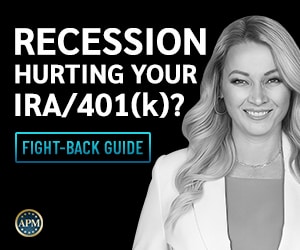Importance of Price-to-Sales ratio for companies
Investors are always interested in finding methods to correctly evaluate different companies in which they are interested in investing. The investors wish to maximize their profit, so they would like to invest in companies which will give good returns. Companies which are already doing well will have a higher stock price, so the investor may not make much profit on the investment. On the other hand, companies that are not making a profit because they are startups or have faced a temporary setback, are likely to do better in future and their share price will also increase.
Definition
Price-to-Sales Ratio or P/S Ratio is the perceived value of a stock by the market compared to the revenues of the company.
Hence for many companies, investors are using the Price-to-Sales Ratio or P/S ratio to evaluate the company and compare it with other companies in the same industry sector. The price of the company shares in terms of market capitalization is compared to the sales of the company to determine whether it is worth investing in the company. Many companies do not make a profit initially after they are started. Hence the Price-to-earnings or P/E ratio which is usually used by investors to evaluate a company is negative. So the investors are using the alternate method of P/S ratio to evaluate the company.
Price-to-Sales Ratio Formula
There are alternate ways of calculating the P/S ratio for a company
P/S ratio = Market capitalization/ (sales or revenues of the company for a period of one year)
The P/S ratio for the company is calculated over a period of one year.
The market capitalization of the company = number of shares of the company issued X price of the shares
The revenues or sales of the company are derived from the financial statements of the company and the share prices from the stock market or secondary sources
An alternate way of expressing the same formula
P/S ratio = Share price/Sales per share
In this formula, the total sales of the company are divided by the number of shares that are issued by the company. The weighted average of the number of shares issued is usually considered. Typically the sales for a period of twelve months are considered.
Price-sales ratio calculator
Explanation
Often due to difficult business conditions like a recession or government policies, a company may make a loss. However, there is a possibility that the business will recover after some months or years, especially if the company has been functioning for a long time. Hence the company continues to have some value for investors, especially those who are willing to take the risk of investing in a company when the share prices are lower, for greater profit at a later date. Since the P/E ratio of loss-making companies is negative and cannot be used for comparison, the P/S ratio is used by investors for evaluating a company they may be interested in.
Since the earnings or profit of a company is considered by investors, lenders and other stakeholders in a company to evaluate it, a business may manipulate the financial data of the business, like the business expenses to show a profit. Some of the expenses may not be disclosed or postponed until a later date. On the other hand, the sales data is comparatively difficult to manipulate, since the company has to provide details of the orders of its customers. However, while evaluating a company, it is advisable to consider all aspects of the company, and looking at different ratios will determine if there are problems that one financial parameter alone will not reveal.
Comparison
The P/S ratio shows how the market values the company for every dollar of sales which the company makes. Growth stocks often do not make a profit, so the investors should use the P/S ratio to compare it with other companies in the same sector. Though other factors are also to be considered, investors will often be interested in finding companies with a low P/S ratio in different industry sectors, so that they can make more profit. A high P/S indicates that the stock market has overvalued the company, and investors may not make a large profit investing in the company.
Some industry sectors like semiconductors are extremely cyclical, and in some years, most of the companies are not making any profit. However, these companies have invested huge amounts of money in their facilities and will make a profit after a few years. Hence in these cases, the P/S ratio is used by investors to check if they are paying the right price for the company. The P/S ratio is also used to check whether a particular company is recovering from losses it suffered and if the company is overvalued in the stock market. It should be noted that sales and profit margins in different industry sectors are also different. The construction sector has high sales, and low-profit margins, while the software sector has high-profit margins, hence the P/S ratio for software companies will be higher.
Debt
One of the limitations of the P/S ratio is that it does not consider the debt of the company. Investors will prefer to invest in a company with low debt and low P/s ratio compared to a business with the same P/S ratio and high debt. This is because the company will have to repay the debt with interest expenses at some time, increasing its expenses, and lowering the profit. Some companies have a large amount of corporate debt and may become bankrupt. These companies often have a low P/S ratio, since the share prices are low since most investors are aware of the corporate debt and the inability of the company to repay the debt, though sales remain high.
Hence while evaluating low P/S ratio companies, investors should also consider the enterprise value (EV) of the company. The enterprise value is the sum of the market capitalization and debt of the company after deducting cash reserves. EV is the cost of purchasing the company, including the debt and the cash. For companies whose P/S ratio is lower than other similar companies in the sector, the investor should also consider other related business parameters like the profit margin, growth prospects and debt, before investing in the business.
























